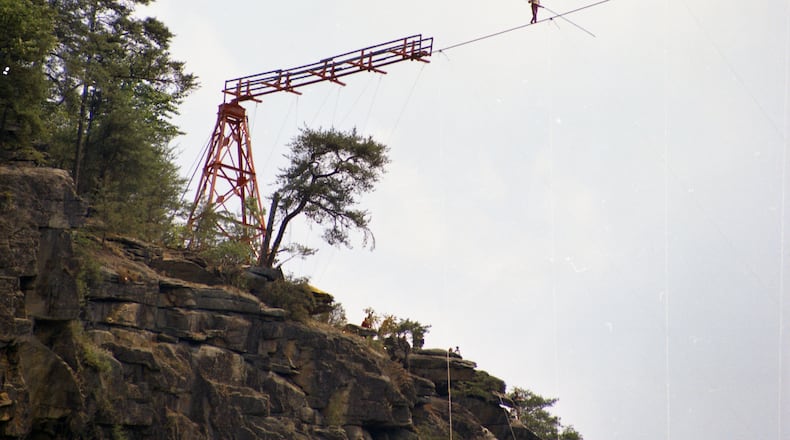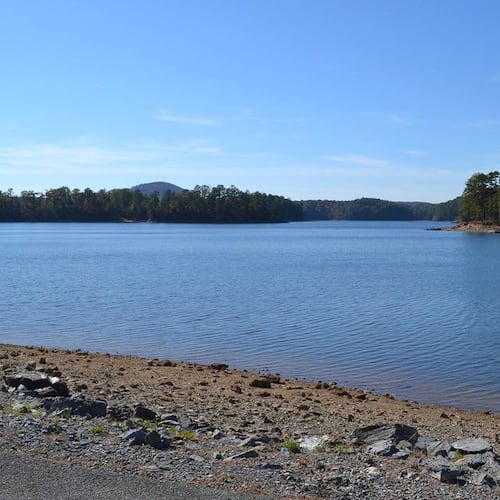Q: I’ve seen Tallulah Gorge listed as a great waterfall hike in Georgia. What is its history?
A: Tallulah Gorge, located in north Georgia's Rabun County, is a chasm over 1,000 feet deep with five waterfalls, numerous hiking trails, a suspension bridge and recreational lake areas. The area now is a state park, but what you'll find there is very different from how it looked as a tourist haven in the 1800s, complete with Victorian-style hotels.
The gorge, which was carved over millions of years by the Tallulah River, quickly became a destination after visitors discovered the falls in 1819. By 1835, local residents offered food and lodging to the growing number of tourists.
“It attracted lots of folks from Atlanta, as well as Athens,” said Jessica James, Tallulah Gorge State Park assistant manager. “Lots of the college students would come up here.”
In 1882, the railway arrived in the town of Tallulah Falls. Businessman Rufus Lafayette Moss Sr. built the first large Victorian-style hotel, the Cliff House Hotel, in 1882 at the edge of the gorge, according to the New Georgia Encyclopedia.
The gorge also attracted tightrope walkers. On July 24, 1886, J.A. St. John, whose stage name was Professor Leon, completed the highest and longest tightrope walk ever attempted, according to Brian A. Boyd’s book, “Secrets of Tallulah.”
In July 18, 1970, Karl Wallenda re-created the professor’s aerial walk. Wallenda walked from Overlook 1 to the south rim of the gorge and performed two headstands as a salute to Vietnam War soldiers, James said. He took 18 minutes to walk 1,000 feet on the cable.
James said emergency personnel laid him down immediately when he reached the other side.
“The legend is when they laid him down, he asked for a martini,” James said.
The two metal towers that held the wire remain, but the wire was taken down.
In 1909, Georgia Power Co. purchased land from the Moss family and built a dam, creating Tallulah Lake. In 1921, a fire destroyed much of the town. Little was rebuilt, as the town’s role as a railroad hub had been surpassed by the railway’s extension north into Clayton and Franklin, N.C.
In 1992, Tallulah Gorge State Park was established, which covers 2,739 acres and has a 63-acre lake. In 2016, 360,785 people visited the park, and officials expect close to 400,000 visitors this year, James said.
The challenging gorge floor hike takes three to four hours and requires bouldering and rock hopping. Only 100 free permits for the hike are allotted daily to protect natural resources and visitors.
Other popular trails include the gorge rim trails, where you can see three of the five waterfalls from the north rim. The path down to Hurricane Falls and back up to the south rim offers a workout, with a total of 1,099 stairs.
“To me, what’s amazing to me about Tallulah Gorge is it provides a variety of opportunities for a bunch of different groups,” James said.
If you’re new in town or have questions about this special place we call home, ask us! E-mail q&a@ajc.com or call 404-222-2002.
About the Author
The Latest
Featured


